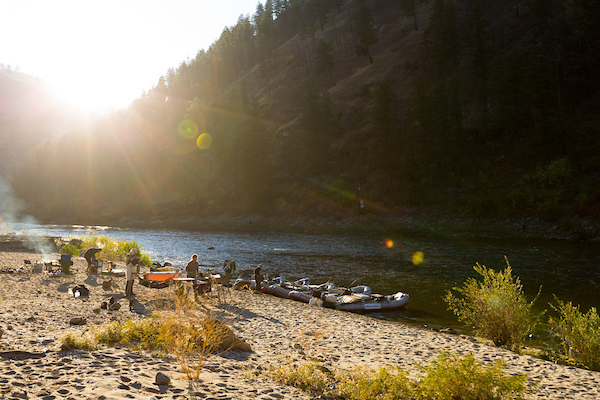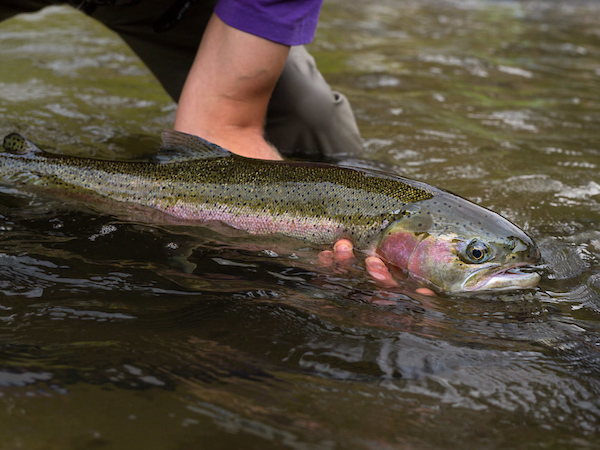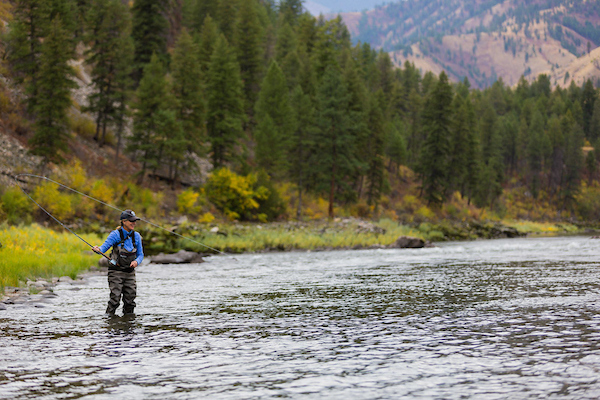
As a steelheader, you may already know the incredible story of Snake River salmon and steelhead, and the precarious position those populations are in now. Today, we have a chance to help Snake River steelhead and salmon.
TAKE ACTION TODAY: TU has setup a website with all the information you need to get a handle on Snake River issues and how you can use your voice to make a difference.
Please take a few minutes to provide comments on the Army Corps of Engineers’ Draft Environmental Impact Statement for the federal dams on the Columbia and Snake Rivers. There are a list of talking points at the bottom of this post to help create your comment.
The deadline for commenting on the draft Environmental Impact Statement (DEIS) for the federal dams on the Columbia and Snake Rivers is April 13. You’ll find all the info you need to comment below and using your voice for the benefit of these fish only takes a few minutes.
Thank you for your support and for speaking up for the future of wild steelhead in the Columbia basin. Read more below, or click here to weigh in now.
-Wild Steelheaders United team

This month, we have an important opportunity to help Columbia and Snake River salmon and steelhead.
This Draft Environmental Impact Statement (DEIS) outlines the management plan for the dams, including what to do about four dams on the Lower Snake. In other words, it’s an important opportunity for the Army Corps to help these struggling fisheries by removing the dams.
The Snake River Basin once supported millions of salmon and steelhead every year. Today, these populations are in dismal shape and if something significant does not change, they are headed for extinction.

Trout Unlimited supports the science-based solution of dam removal – one of the options that was legally required to be evaluated and the only option with the potential to achieve recovery. However, the ‘preferred option’ as stated by the Army Corps in this plan does not even provide reasonable assurance that it will avoid extinction, let alone recover Snake River salmon and steelhead to abundant, harvestable levels.
Despite recent events, it does not appear that the comment deadline will be extended. With that in mind, there are two things you can do to help salmon and steelhead persist for decades to come.
- Comment on the DEIS: Please comment that the final EIS should include a preferred alternative that includes removal of the lower Snake River dams. While the DEIS is a lengthy and technical document, the takeaway is that managers currently intend to take a “business as usual” approach, which will NOT restore salmon and steelhead and is not acceptable. We have included a few potential talking points below to add to your comments.
- Contact your state and federal lawmakers: The DEIS will not solve this problem. Only action from Congress can bring stakeholders to the table to find solutions that work for fish and people.
Thank you for your time and attention to this important conservation issue.
For more information, or specific questions, please contact Shauna Stephenson, sstephenson@tu.org or go to tu.org/lowersnake.
Talking Points for Comments:
- The Snake River Basin presents the greatest potential for wild fish recovery of any watershed in the Columbia Basin. Mile-for-mile it has the coldest, most undisturbed stream habitat and is predicted to contain the majority of coldwater habitat as the climate warms.
- The science consistently supports removal of the four Lower Snake River dams as necessary to recover robust and fishable populations of salmon and steelhead in the Snake River basin.
- The DEIS makes clear that removing the lower Snake River dams is the best option for Snake River salmon and steelhead, but substantially underestimates the level of benefit.
- The DEIS preferred alternative does not even provide reasonable assurance that it will avoid extinction, let alone recover Snake River salmon and steelhead to abundant, harvestable levels. There is a good chance it will not meet the requirements of the Endangered Species Act and will likely land everyone back in court starting yet another cycle of expensive litigation that keeps the region mired in uncertainty.
- We are running out of time if we want populations of these iconic fish to persist for future generations. It is time for all stakeholders and elected officials to come to the table to build forward-looking and durable solutions that will recover Snake River salmon and steelhead while strengthening the regional economy.
- Dam removal is a proven method to restore fish populations. While this might have been a radical idea at a point in our history, it is not any longer and its power to restore rivers is evident from Maine to the Olympic Peninsula of Washington State.
- The final EIS should include a preferred alternative that includes removal of the lower Snake River dams. Recovery of abundant, healthy and harvestable levels of Snake River salmon and steelhead is not achievable with the dams in place, as several decades of failed recovery efforts and billions of dollars have revealed. The agencies should call on Congress to make the necessary investments to replace the dams’ benefits so we can both recover the fish and maintain a vibrant regional economy.

